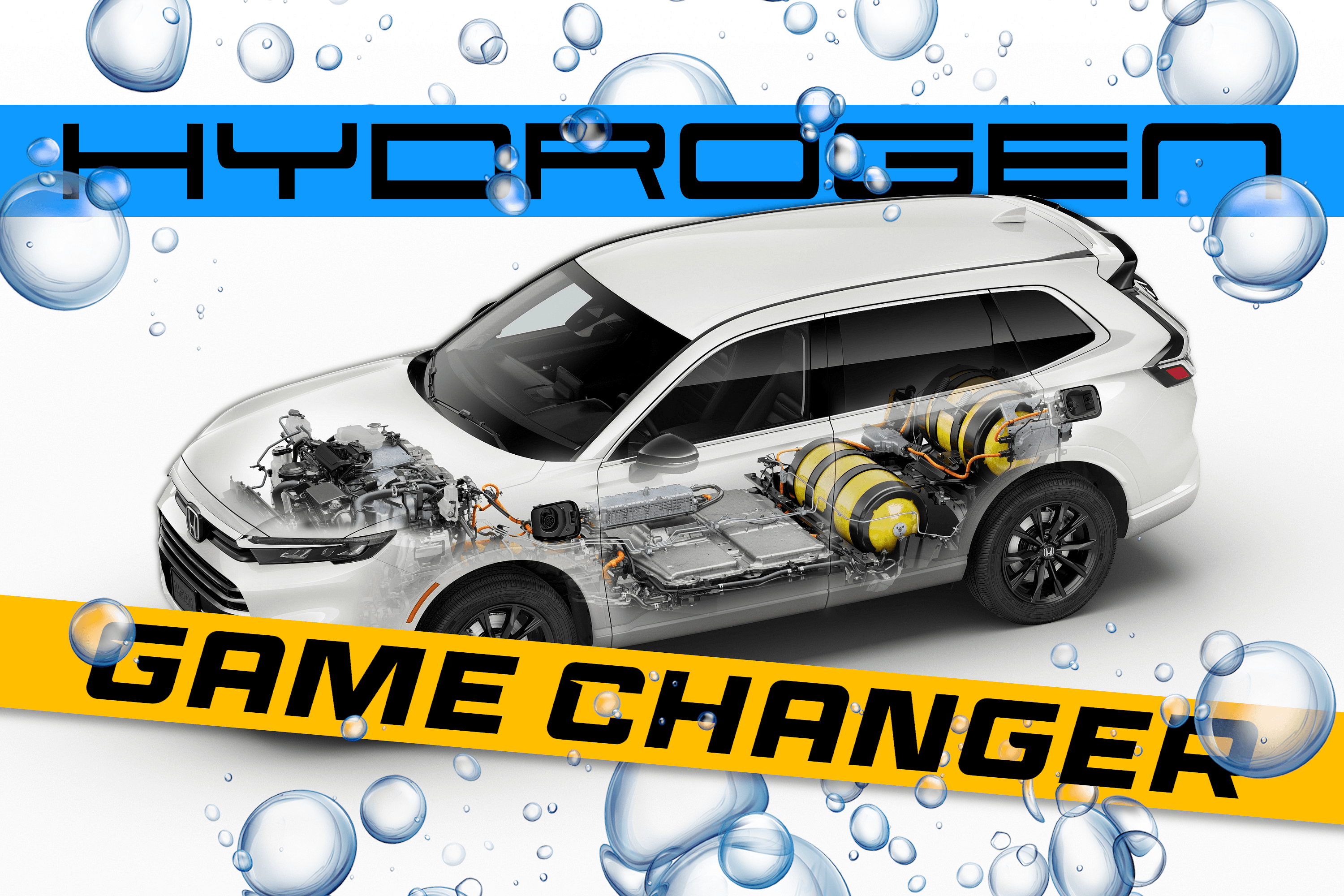Key Takeaways
- Production of the hydrogen fuel cell-powered Honda CR-V e:FCEV is officially underway.
- The unique SUV is being produced at Honda’s Performance Manufacturing Center in Marysville, Ohio.
- Honda says the CR-V e:FCEV will go on sale in Japan and the United States later this year; pricing is yet to be confirmed.
Production of the hydrogen-powered Honda CR-V e:FCEV is officially underway. The Japanese automaker announced that the fuel cell crossover is rolling off the Performance Manufacturing Center (PMC) assembly line in Marysville, Ohio. Established in 2016 as a specialty plant that builds low-volume vehicles (such as the NSX and TLX Type S PMC Edition), the e:FCEV is in good hands.
Unveiled in February this year, the CR-V e:FCEV is a rather innovative fuel cell vehicle that combines hydrogen fuel with a conventional plug-in function. Customers can fill the car with hydrogen, providing an estimated range of 270 miles. However, the battery can also be charged like a PHEV, with 29 miles of available all-electric range. Honda says the hydrogen CR-V will go on sale in the United States and Japan sometime this year.
Honda
Japanese automaker Honda rose from the ashes of WWII and set about its business as a manufacturer of motorcycles initially, only launching its first car, the T360 kei truck, in 1963. Founder Soichiro Honda targeted the American market as the most important nut to crack, leading to generations of iconic nameplates like the Civic and Accord being among America’s best-selling passenger cars. Today, Hondas are renowned for their safety, practicality, and reliability, with a sprinkling of performance from models like the Civic Type R.
- Founded
- 24 September 1948
- Founder
- Soichiro Honda
- Headquarters
- Hamamatsu, Japan
- Owned By
- Publicly Traded
- Current CEO
- Toshihiro Mibe
The CR-V e:FCEV Is Rather Innovative
This means the CR-V e:FCEV provides customers with the best of both worlds. Adding a plug-in option makes the vehicle more versatile, adding range and convenience – especially if you’re far from a hydrogen filling station. And unlike a traditional PHEV, there’s no need for a gas-powered engine, which emits emissions once the battery is depleted. Honda claims this is the first hydrogen vehicle in the world to combine fuel cell and plug-in technology.

Add CarBuzz to your Google News feed.
The automaker says the experience is similar to the standard CR-V, which means it should be easy to drive and operate. Don’t expect blistering performance, though. Total outputs are pegged at 174 horsepower and 229 lb-ft of torque. That’s on par with other hydrogen fuel cell vehicles like the Hyundai Nexo and Toyota Mirai, but both offer superior range, at 354 and 400 miles, respectively.
How Much Will It Cost?
Honda has yet to announce pricing, but the difference in range could be ignored if the CR-V e:FCEV is competitively priced. The Mirai starts at $50,190, while the Nexo is available for $60,135. If Honda can get pricing below the $50,000 mark, the CR-V e:FCEV would be the cheapest fuel cell vehicle in the United States. It remains to be seen whether Honda will throw in a complimentary fuel allowance, which rival brands do. We expect Honda to announce pricing closer to the on-sale date.

6 Ways The Honda CR-V e:FCEV Is A Game-Changer For Hydrogen Vehicles
It could be a smash hit, but some changes need to be made on a large scale.
Honda co-developed the fuel cell system with General Motors as part of a joint venture. The automakers claim that by working together, they have reduced the cost of the fuel cell system to one-third of the fuel cell system used on the Honda Clarity. This bodes well for affordability – emissions-free vehicles remain prohibitively expensive, especially hydrogen fuel cell cars. It’s worth noting that Honda also worked with GM for the Prologue and Acura ZDX, both of which use GM’s Ultium platform. Development work on a new affordable EV was canceled, and the partnership was terminated. Honda now uses corrosion-resistant materials and degradation inhibition control, which has improved durability and low-temperature resistance. Alongside new hybrid models, the aforementioned Prologue, and a slew of future EVs, it finally looks like Honda is taking electrification seriously.
#Hondas #American #Hydrogen #Revolution #Begun


